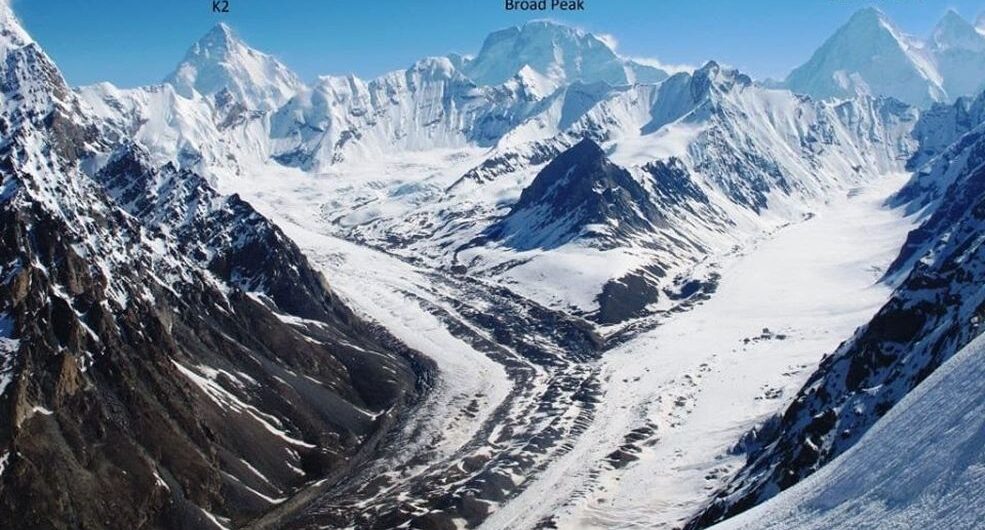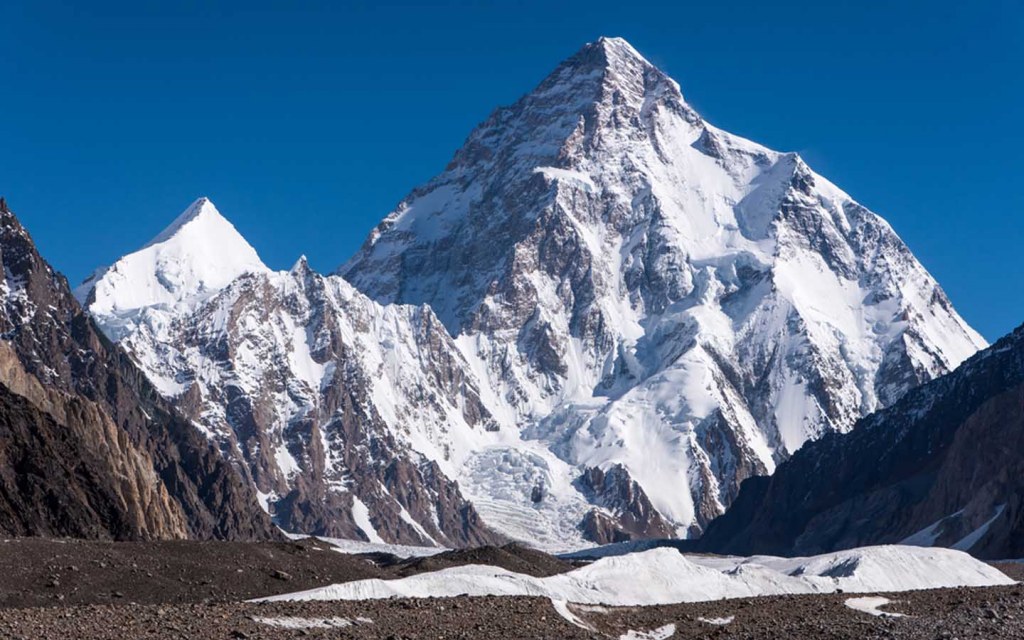Pakistan, with its majestic mountain ranges, is home to 108 peaks that are higher than 7,000 meters above sea level. This remarkable feat places Pakistan among the top destinations for mountaineers, trekkers, and adventure seekers worldwide. The country’s towering peaks are part of some of the most iconic mountain ranges, including the Karakoram, Himalayas, and Hindu Kush.
This article delves into the fascinating details about Pakistan's high-altitude peaks, their significance, and their contribution to tourism, the environment, and the nation’s cultural heritage.
The Mountain Ranges of Pakistan
Pakistan's mountainous regions are divided into three major ranges, each contributing to the country's unique geography and housing numerous peaks above 7,000 meters.
1. Karakoram Range
-
The Karakoram Range is the most prominent mountain range in Pakistan and is home to some of the world's tallest peaks, including K2.
-
It stretches across Gilgit-Baltistan and parts of China and India.
-
The range includes 60 peaks higher than 7,000 meters, making it the most significant contributor to Pakistan's high-altitude landscape.

2. Himalayas
-
The Himalayas extend into northern Pakistan, particularly in the Azad Jammu and Kashmir region.
-
Known for their lush valleys and towering mountains, the Himalayas in Pakistan include peaks such as Nanga Parbat.
-
This range is renowned for its biodiversity and picturesque scenery.
3. Hindu Kush
-
The Hindu Kush range lies in northwestern Pakistan, near the borders of Afghanistan.
-
It is known for its rugged terrain and remote peaks, including Tirich Mir, the highest peak in the Hindu Kush.
With 108 peaks higher than 7,000 meters, Pakistan is a treasure trove of natural beauty and adventure. These mountains, including the mighty K2, the formidable Nanga Parbat, and the stunning Rakaposhi, not only showcase the country’s geographical diversity but also contribute significantly to its tourism and cultural heritage.
For climbers, these peaks represent a thrilling challenge, while for nature enthusiasts, they offer unparalleled beauty and serenity. As Pakistan continues to promote adventure tourism and preserve its natural wonders, its towering peaks remain a source of pride and inspiration for the nation and the world.
How Many Peaks in Pakistan Are Higher Than 7000 Meters?
Pakistan has 108 peaks that are higher than 7,000 meters above sea level. These peaks are a testament to the country's geographical diversity and natural grandeur. Among them, five peaks exceed 8,000 meters, placing Pakistan among the few countries with such a concentration of towering mountains.
List of Notable Peaks in Pakistan Above 7000 Meters
Peaks Above 8000 Meters
-
K2 (Mount Godwin-Austen)
-
Height: 8,611 meters
-
Range: Karakoram
-
Significance: K2 is the second-highest mountain in the world and one of the most challenging climbs due to its extreme weather and steep slopes.
-
-
Nanga Parbat
-
Height: 8,126 meters
-
Range: Himalayas
-
Significance: Known as the “Killer Mountain”, Nanga Parbat is infamous for its difficulty and high fatality rate.
-
-
Gasherbrum I (Hidden Peak)
-
Height: 8,080 meters
-
Range: Karakoram
-
Significance: The 11th-highest mountain in the world, it offers a challenging yet rewarding climb.
-
-
Broad Peak
-
Height: 8,051 meters
-
Range: Karakoram
-
Significance: Located near K2, Broad Peak is the 12th-highest peak in the world.
-
-
Gasherbrum II
-
Height: 8,035 meters
-
Range: Karakoram
-
Significance: Known for its relatively accessible routes, it attracts many climbers.
-
Peaks Between 7000 and 8000 Meters
-
Rakaposhi
-
Height: 7,788 meters
-
Range: Karakoram
-
Significance: Rakaposhi is famous for its stunning prominence and visibility from the Hunza Valley.
-
-
Tirich Mir
-
Height: 7,708 meters
-
Range: Hindu Kush
-
Significance: The highest peak in the Hindu Kush, it is a landmark in Chitral.
-
-
Diran Peak
-
Height: 7,266 meters
-
Range: Karakoram
-
Significance: Known for its relatively easier climb compared to other peaks in the region.
-
-
Spantik (Golden Peak)
-
Height: 7,027 meters
-
Range: Karakoram
-
Significance: A popular choice for amateur climbers, it offers breathtaking views.
-
Importance of These Peaks
1. Tourism and Adventure Sports
-
Pakistan's towering peaks attract climbers, trekkers, and nature enthusiasts from around the globe.
-
Adventure tourism, including mountaineering and trekking, significantly contributes to the local economy.
2. Environmental and Ecological Role
-
These mountains are crucial for maintaining the region's ecological balance.
-
They serve as water towers, feeding rivers like the Indus and sustaining millions of people.
3. Cultural and Spiritual Significance
-
Many peaks are considered sacred by local communities and hold cultural importance.
-
The mountains inspire folklore and traditional practices in the region.
Challenges of Climbing High Peaks in Pakistan
Climbing peaks above 7,000 meters is an extraordinary feat, but it comes with its own set of challenges:
-
Extreme Weather Conditions
-
Temperatures often plummet below -40°C.
-
Unpredictable weather makes climbing risky.
-
-
Altitude Sickness
-
Reduced oxygen levels at high altitudes can cause severe health issues.
-
Proper acclimatization is essential.
-
-
Technical Difficulties
-
Peaks like K2 and Nanga Parbat are among the most technically challenging climbs in the world.
-
Climbers require advanced skills and experience.
-
-
Logistical Barriers
-
Remote locations and limited infrastructure make access difficult.
-
Organizing expeditions requires significant resources and planning.
-
Tips for Climbing Peaks in Pakistan
-
Physical and Mental Preparation
-
High-altitude climbing demands peak physical fitness and mental resilience.
-
-
Hire Local Guides
-
Experienced local guides are invaluable for navigating challenging terrains.
-
-
Invest in Quality Equipment
-
Proper gear ensures safety and comfort during the climb.
-
-
Acclimatize Properly
-
Spend time at base camps to adjust to the altitude.
-
-
Monitor Weather Conditions
-
Always check forecasts and plan climbs accordingly.
-

Frequently Asked Questions (FAQs)
1. How many peaks in Pakistan are higher than 7,000 meters?
Pakistan has 108 peaks that are higher than 7,000 meters above sea level.
2. Which is the highest peak in Pakistan?
The highest peak in Pakistan is K2, also known as Mount Godwin-Austen, at 8,611 meters.
3. Why is K2 called the “Savage Mountain”?
K2 is called the “Savage Mountain” due to its extreme difficulty and high fatality rate among climbers.
4. What is the significance of these peaks for Pakistan?
These peaks are vital for tourism, the environment, and the cultural identity of the region.
5. Which mountain ranges in Pakistan have peaks over 7,000 meters?
The Karakoram, Himalayas, and Hindu Kush ranges are home to these towering peaks.





.gif)















Sign in
to continue to ilmkidunya.com